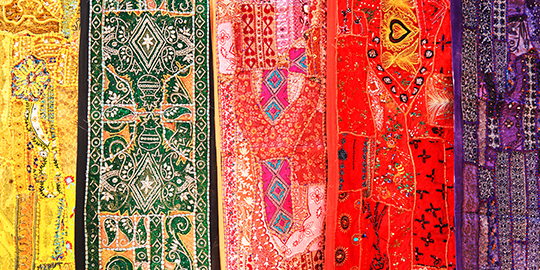
Garment industry needs policy support, incentives to increase exports: AEPC
Himanshu Vatsa | The Dollar Business
India’s garment industry needs policy support along with incentives on urgent basis to achieve the annual export target, said Virender Uppal, Chairman of the Apparel Export Promotion Council (AEPC). Expressing concern over the falling growth rate of the country’s garment export from 9.2% in April to 5% in May this year, Uppal said, “Achieving the target of $18.7 billion in 2015-16 would be very ambitious task and difficult to achieve, unless, the recommendations of the AEPC are accepted and implemented.” According to the AEPC chairman, sliding demand in the US and European countries coupled with withdrawal of various incentives and interest subvention scheme by the government in the new foreign trade policy (FTP 2015-19) has dampened the industry. “The non-traditional markets which used to constitute 35-40% share in India’s garment exports are poised to receive a setback due to withdrawal of the Chapter 3 benefits. The market like Latin America, Africa and Central Asia has been excluded from the list,” he said, adding that the EU market constitutes 41% of the India’s ready-made garment (RMG) exports but that market continues to be subdued. Besides, Indian exporters face duty disadvantage of 9.6% compared to their counterparts in Bangladesh and Pakistan who have duty-free access in European market. The USA which constitutes 21.7% of India’s RMG exports is still on the path of gradual recovery. “Buyers are asking for lower price due to inflation in importing countries and there is a cut-throat competition among exporters in the global market. That’s why the margin is decreasing,” Subodh Jain, Managing Director of Niryat-Sam Apparels Ltd, told The Dollar Business. According to industry leaders, higher interest rate on credit and increased transportation cost are major factors that hit the competitiveness of Indian exporters. The AEPC chairman has asked the government to implement the interest subvention scheme with retrospective effect from April 2014 to “partially mitigate high cost of lending”, which is hovering around 11 -12%, as compared to 4 – 6% in competing countries. Under the interest subvention scheme, exporters used to get 3% rebate in the interest rate on their loans. Uppal also demanded for quick clearance of export and import goods by the customs department and duty credit scrip at 5% for major markets like US, EU, Canada, Mexico, Australia, Switzerland, Russian Federation and other countries.
July 14, 2015 | 3:33 pm IST.






 to success.
to success.